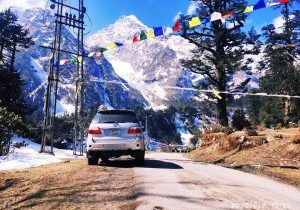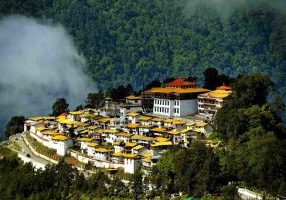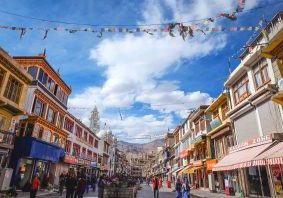PLACES TO VISIT IN THIS REGION
At the southernmost extremity of India, Kanyakumari is almost as compelling for Hindus as Rameshwaram. It’s significant not only for its association with a virgin goddess, Devi Kanyakumari, but also as the meeting point of the Bay of Bengal, Indian Ocean and Arabian Sea, thus regarded as a holy sangam. Watching the sun rise and set from here is the big attraction, especially on full-moon day in April, when it’s possible to see both the setting sun and rising moon on the same horizon. Although Kanyakumari is in the state of Tamil Nadu, most foreign visitors arrive on day-trips from Kerala. While the place is of enduring appeal to pilgrims and those who just want to see India’s tip, some may find it bereft of atmosphere, its magic obliterated by ugly concrete buildings and hawkers. Kanyakumari was devastated by the 2004 tsunami, although the seafront and jetty have since been rebuilt.
Kumari Amman Temple
The shoreline Kumari Amman Temple is dedicated to the virgin goddess Devi Kanyakumari, who may have originally been the local guardian deity of the shoreline but was later absorbed into the figure of Devi, or Parvati, consort of Shiva. The image of Devi Kanyakumari inside the temple wears a diamond nose stud of such brilliance that it’s said to be visible from the sea. Male visitors must be shirtless and wear a dhoti before entering the temple; non-Hindus are not allowed in the inner sanctum. It is especially auspicious for pilgrims to wash at the bathing ghat here.
Gandhi Mandapam
Resembling a prewar British cinema, the Gandhi Mandapam, 300m northwest of the Kumari Amman Temple, was actually conceived as a modern imitation of an Odishan temple. It was so designed that at noon on October 2, Mahatma Gandhi’s birthday, the sun strikes the auspicious spot where his ashes were laid prior to immersion in the sea.
The rocks
Possibly the original sacred focus of Kanyakumari were the two rocks, about 60m apart, jutting out of the sea 500m off the coast. They can be reached by the Poompuhar ferry service leaving from the jetty on the east side of town. Known as the Pitru and Matru tirthas, they attracted the attention of the Hindu reformer Vivekananda (1862–1902), who swam out to the rocks in 1892 to meditate on the syncretistic teachings of his recently dead guru, Ramakrishna Paramahamsa. Incorporating elements of architecture from around the country, the 1970 Vivekananda Memorial houses a statue of the saint. The footprints of Devi Kanyakumari can also be seen here, at the spot where she performed her penance. The other rock features an imposing 40m-high statue of the ancient Tamil saint and poet Thiruvalluvar, who is revered throughout the state.
Wandering Monk Museum (Vivekananda Puram)
The small Wandering Monk Museum is dedicated to the life and teachings of Vivekananda, one of the first Hindu masters to take the teachings of advaita non-dualism to the West. The recently modernized exhibition in English, Tamil and Hindi concentrates on providing a meticulously detailed account of the swami’s odyssey around the Subcontinent at the end of the nineteenth century, using a series of attractively illustrated panels.




